Leaving the Door Open: New Extended Hours Seek to Provide Students More Ways to Engage with the Garden
News
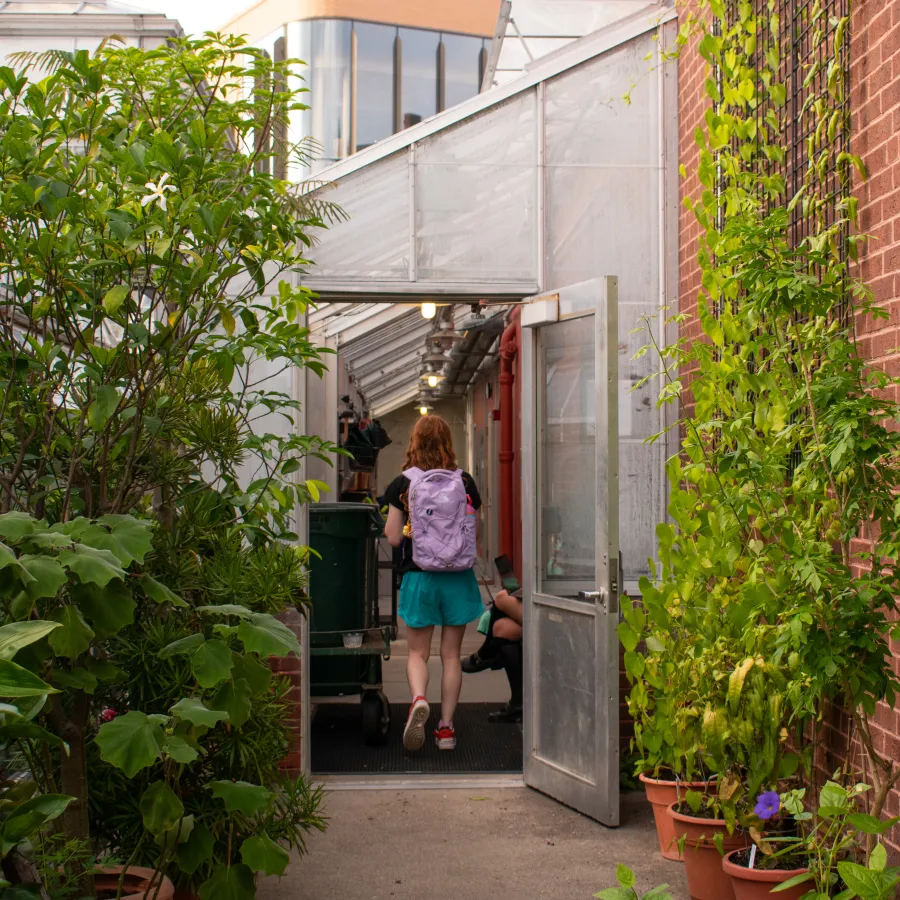
Published October 6, 2025
Campus quiets down as the students leave class and head toward their evenings –or, starting this semester, toward the botanic garden. Most days the garden closes at 4 pm, but now, the backdoor of Lyman is still ajar from 4-6 pm on Tuesday evenings as part of the new open hours program exclusively for students.
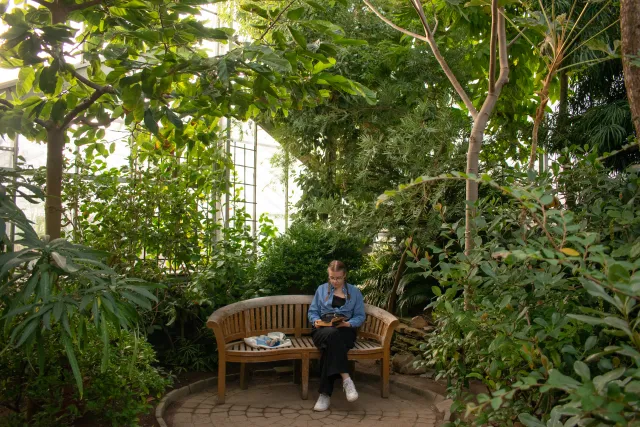
Spurred by student feedback, the After Hours program seeks to be an accessible entry point to the botanic garden by offering times compatible with student schedules and allowing them to connect deeply with everything the garden has to offer. Throughout the semester, students can attend workshops, study, or just enjoy the space during these hours away from the bustle of the general public.
“It's a great opportunity for more people to just be able to come in,” said Sofi Packard ’27, the engagement intern at the garden this year. “I love seeing it busy here, but I feel like most often I see people who are community members, not at Smith. I would love to see more Smith students.” Packard and Manager of Engagement Anjali D’Souza M.A.T ’18, seek to bring more students in through these extended hours.
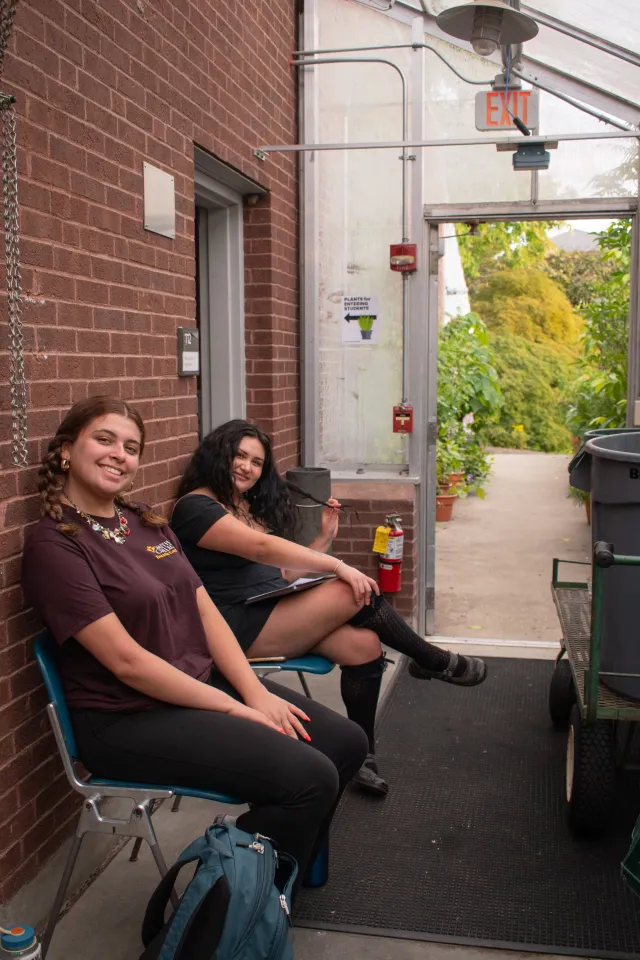
Last spring, the engagement team held listening sessions to hear input around what has felt welcoming at the garden, and where things could be improved. “A lot of students, especially the STEM students, said that they would want to come to Lyman, but by the time they got out of class, we were closed. Because we’re open til 4, it wasn’t really accessible to many students given their very robust schedules. So we decided to pilot these extended hours,” said D’Souza. The hours extend until 6 pm on Tuesdays, at least for the duration of first semester; they may be revisited in the winter due to the increasingly earlier sundown.
During the open hours on September 16, around six students came to visit, in addition to at least one squirrel and one frog (other animals may have gone without detection). Already, students have stopped by for a variety of reasons. “Some people just want to explore the botanic garden by themselves, some people want to do work here,” said Botanic Garden Student Educator Sophie Ramirez ’28. She greets students as they enter Lyman. Ramirez explained that doing schoolwork in the garden during normal hours can be difficult as visitors filter through. “I feel like having this time for students gives them an opportunity to just kind of chill out and relax in the garden without having to worry about moving or people coming up to them or things like that.”
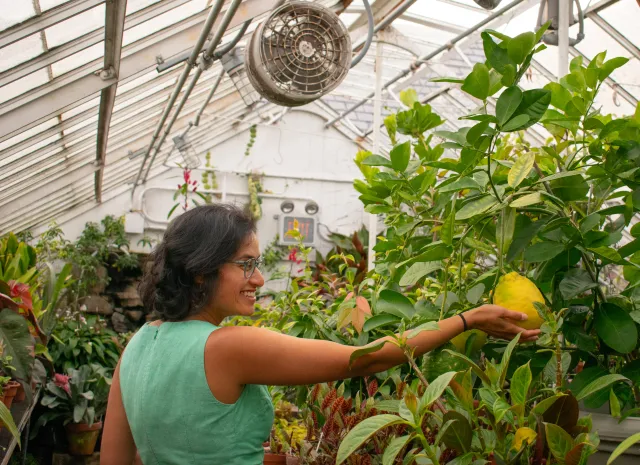
In addition to providing open space, workshops will also be offered throughout the semester. The first workshop is “Botanical Body Oils” on Tuesday, October 7. D’Souza hopes that, through these workshops, students will form deeper connections to plants. “We’re developing a series once a month of what I'm tentatively calling ‘Food as Medicine,’ where we introduce students to their more-than-human plant relatives. Even if they are already familiar with the foods or the ways in which those plants nourish us, we are trying to maybe change their orientation to recognize that plant as somebody they need to pay attention to.” She mentioned several edible plants that Lyman has, including papayas, cacao, and ponderosa lemons that might be featured in workshops. “Food will be our way of inviting people in,” she said.
D’Souza stressed that the program is adaptable, and encourages students to make suggestions if they see ways it could be improved. “This is one avenue to share and communicate with one another and get a chance to have relationships with other people, and also plants and animals–like that frog or the squirrel that came in.”
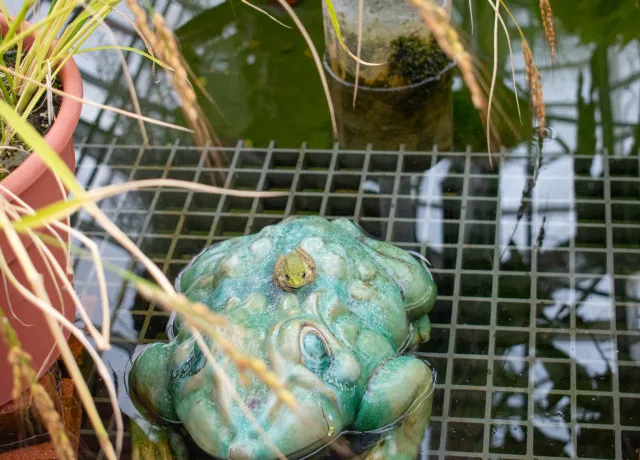
Overall, the hours will provide more avenues for students to get into the garden and delight in everything these living collections have to offer. “It’s a great way to get your bearings in the garden and then hopefully come back when you have time. Bring a friend, bring someone who doesn’t come to Smith, and show off Smith to them. It's a great place to catch your breath,” said Packard.